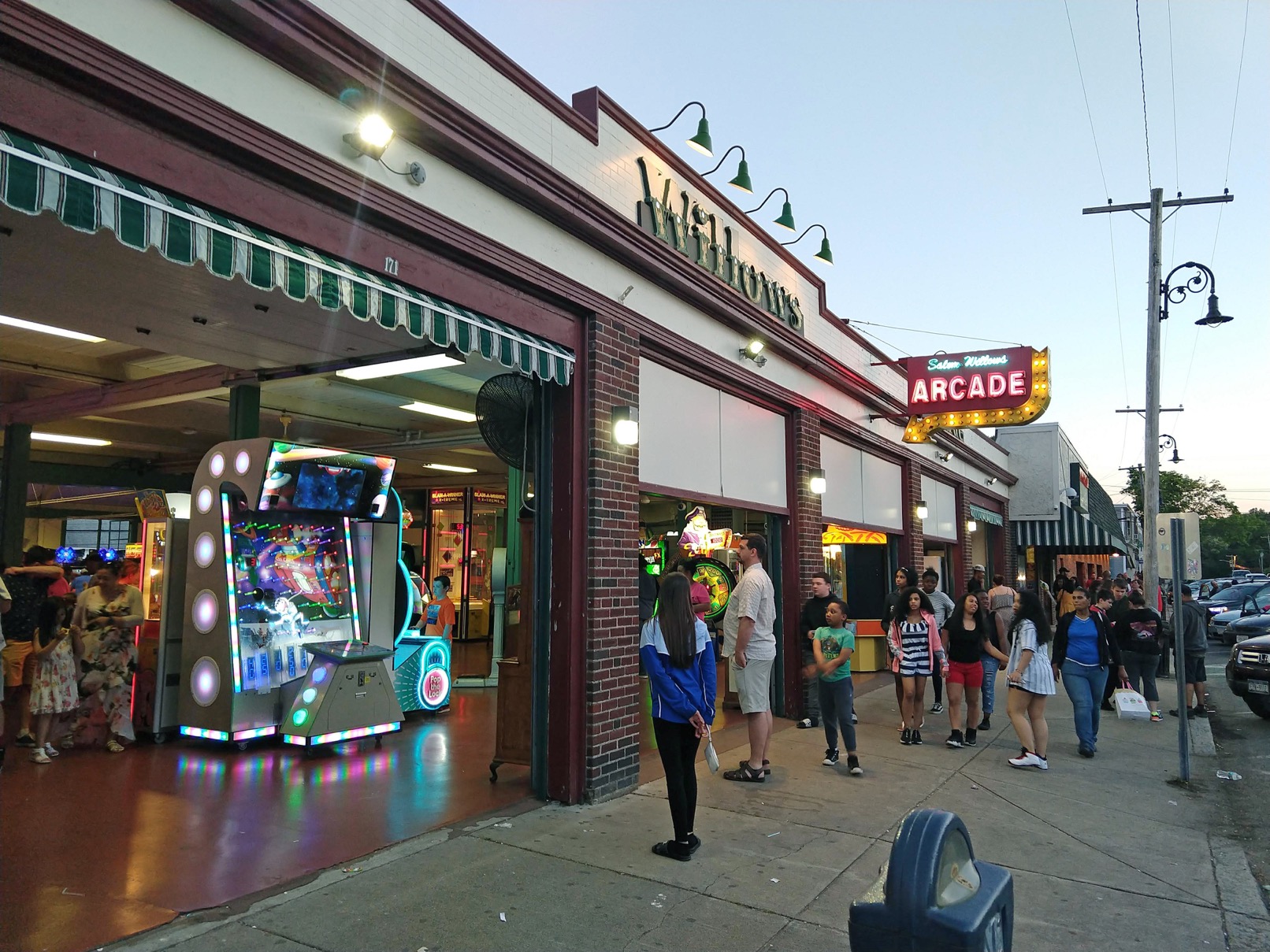Across our communities, people are wrestling with the devastating impacts of opioid addiction—a crisis that has shattered families, overwhelmed our social services, and put unprecedented strain on law enforcement and healthcare systems. The common refrain from local governments has been that there’s simply not enough funding to adequately address these challenges. However, a significant financial shift is on the horizon.
The Commonwealth is now distributing substantial funds from settlements with opioid distributors and manufacturers to cities and towns. These resources have the potential to make a transformative difference in combating the opioid crisis and alleviating its wide-ranging effects. But the crucial question remains: Will these funds be used effectively, and how can the public hold their local governments accountable? This is more than a matter of fiscal responsibility—it’s a matter of life and death.
Massachusetts by the Numbers: A Sobering Reality
In Massachusetts, the opioid crisis has reached staggering proportions, eclipsing prior records and leaving communities devastated. Preliminary data from the state’s Department of Public Health reveals that 2,357 opioid-related overdose deaths occurred in 2022 alone—57 more than in 2021, and a 9% increase from the highest point before the COVID pandemic. The grim tally averages out to more than six deaths a day, with notable racial disparities evident. For example, preliminary numbers show a 42% rise in overdose deaths among Black individuals. Adding to the urgency, the presence of fentanyl was found in 93% of those who died from an overdose last year. With a problem so pervasive and lethal, the question arises: How will the Commonwealth and its municipalities utilize the recently acquired opioid abatement funds to turn the tide?
In an attempt to hold those accountable for fueling the crisis, Massachusetts took legal action against opioid manufacturers and distributors. In 2022, major pharmaceutical companies and drug distributors agreed to a monumental settlement. Four key opioid companies and three leading distributors settled for a combined $26 billion in lawsuits filed by states, local governments, and Native American tribes. The Commonwealth’s portion of this legal windfall is meant to fund opioid abatement programs—remedial actions designed to alleviate the opioid epidemic’s toll on individuals and communities. These funds present an unprecedented opportunity for Massachusetts and its cities and towns to implement comprehensive strategies to combat opioid addiction and its devastating repercussions.
The Windfall: Settlements Flood Local Coffers
The settlement reached has granted Massachusetts a substantial amount earmarked specifically for fighting the opioid crisis. The Commonwealth is tasked with not just distributing these funds to local municipalities but also monitoring their usage to ensure they’re allocated effectively. Cities and towns that receive $35,000 or more in the 2023 fiscal year are required to submit an annual report detailing their spending and chosen abatement strategies.
From Settlement to Solution: Accountability and Allocation
It’s not just a cash handoff; the state has a structured reporting and accountability system in place to make sure this money is used to create lasting change. With these protocols, the state aims to exercise fiscal responsibility, ensuring that these settlement funds truly serve their intended purpose—lessening the burden of opioid addiction on individuals, families, and community resources.
Spend the Money to Save Lives
Metropolitan Area Planning Council
Municipalities may be tempted to use opioid settlement dollars to fill holes in their budgets rather than expand needed substance use and mental health programs. They should use the funds to supplement rather than supplant existing spending.
More Than Money: Structured Oversight for Lasting Change
The timetable for the disbursement of these settlement funds is set on a fiscal year basis, beginning in 2023. But the money doesn’t just land in municipal accounts without strings attached. Starting in August 2023, all participating municipalities have been obligated to submit an annual report to the Commonwealth detailing their planning process, strategies chosen, and actual expenditures from the Opioid Abatement Fund. This isn’t merely a bureaucratic hoop to jump through; it’s a crucial part of the state’s oversight mechanism to ensure that these funds are used effectively and transparently to combat the opioid crisis at the local level.
In an effort to bring transparency and public accountability to the allocation of opioid abatement funds, The Greylock Glass has reached out to most cities and towns in the Berkshires, including Pittsfield, with specific inquiries. The central question focuses on the management of these critical funds. We’ve asked municipalities to identify the person or committee responsible for overseeing the distribution and usage of the opioid abatement money. This is pivotal information that holds local governments accountable for their actions and enables residents to know who’s pulling the strings when it comes to such a pressing issue.
Most municipalities, including North Adams — recipient of the second largest opioid remediation fund allotment in the Berkshires, have ignored our request for information regarding their management of the monies they received.
Who’s in the Room Where It Happens?
Moreover, we’re seeking to gauge the level of community involvement in the decision-making process by asking what efforts the towns have made to solicit input from local stakeholders, especially those with lived experience of the opioid epidemic. Other targeted queries include the total amounts received and expended in Fiscal Year 2023, the strategies selected for opioid abatement, and actions taken to correct service disparities and inequities in treatment and prevention programs. In essence, we aim to uncover whether the towns are prioritizing vulnerable and under-served populations, and if the public can expect comprehensive reporting in August 2023, as mandated by the Commonwealth.
Pittsfield Mayor Linda Tyer accepted an invitation to discuss how the City is navigating this delicate landscape. According to the mayor, Pittsfield is keenly adhering to the state guidelines on the utilization of the opioid abatement funds. However, the city hasn’t yet touched the $510,000 it received. The reason? It’s caught in a bureaucratic limbo, waiting for additional guidelines from the Massachusetts Department of Revenue.
Stuck in Limbo but Not Idle
Mayor Tyer explained, “If you’ve been studying how Massachusetts is handling this, then you know that there are some hiccups that we have with the Massachusetts Department of Revenue in terms of how cities and towns can manage these funds. And we’ve been waiting for the state legislature to resolve these problems. So, for example, in Pittsfield, we haven’t spent any of our funds. We’ve received $510,000, but we have not spent any of it because we are waiting for the Department of Revenue to provide us with guidance on how to best manage these funds within the structure of municipal finance.”
Despite the bureaucratic hurdles, the City of Pittsfield isn’t sitting idle. Mayor Tyer and her team are in continuous contact with the Massachusetts Department of Revenue, waiting for the green light. In the meantime, they’re doing their homework—preparing plans, consulting with community stakeholders, and mapping out where the $510,000 would be most effective in fighting the opioid epidemic locally. The aim is to hit the ground running the moment the State provides the necessary guidance. So, while the money remains untouched for now, the city is poised to deploy these much-needed funds in full compliance with State directives.
A Coalition that Does More Than Talk
Mayor Tyer had this to say about the city’s initiatives, “The City’s director of public health and some of the staff members are currently participating in a variety of coalitions, including Pittsfield Healing Communities. And the purpose of the Healing Communities Coalition is to gather information at community events, to participate with community partners who are in this field of work.”
This coalition isn’t just a think-tank; it aims to gain on-the-ground insights, particularly from those with first-hand experience.
Mayor Tyer continued, “And to gain insight into how best the City of Pittsfield can partner up with our community partners who are engaged in this work, there are members of the Healing Communities with lived experience.”
The city isn’t stopping at coalitions and conversations; they’re taking a hands-on approach through staffing changes.
New Roles, New Strategies
“The other thing that we’ve been doing,” the Mayor said, “is that we have in the City’s Department of Public Health hired a social worker and a community health worker. And the responsibilities for these two employees is to work with our community members who are at high risk of overdose and other types of life-altering circumstances like homelessness, for example.”
So what exactly do these new hires do? They’re not just desk jockeys, that’s for sure.
“They’ve been spending time at our public library connecting with on average, 20 or so people per week.” Mayor Tyer elaborated. “And they’ve been providing access to services for people who are seeking recovery programs or peer support. They’ve been providing overdose education and access to naloxone.
While this all sounds promising, the kicker here is the funding—or lack thereof—for these programs.
“We’re doing that with ARPA (American Rescue Plan Act ) funds and with city municipal budget funds, not with the opioid funds,” Tyler explained. “Not yet.”
Innovation and Re-imagining Key to New Outcomes?
So, despite these local initiatives, how are they lining up with larger harm reduction strategies?
“Part of harm reduction is providing naloxone kits, fentanyl test strips, personal hygiene products,” Tyer adds. “And in addition to that, our staff is attending some trainings, learning more about the strategies that can be used to support people in our community who are struggling with these devastating substance use disorders and the consequences associated with it.”
Asked about the state’s encouragement for cities and towns to get creative in their approach, Mayor Linda Tyer confirmed that Pittsfield is already ahead of the curve. The city is putting the theory of collaboration into practice, particularly in its unique staffing choices for public health and safety.
“The most innovative thing we’re doing right now?” Mayor Tyer considered, “We’re the only community in the Berkshires with a licensed social worker in the city’s Department of Public Health.”
She went on to highlight an additional layer of support: a licensed social worker in the police department, overseeing ‘co-responders’ who step in when police matters reveal underlying mental health or substance use disorder issues.
Navigating the Legal Labyrinth
As the state gears up to enforce new reporting requirements, starting in just a couple of weeks, all eyes are on cities and towns like Pittsfield. Any municipality receiving $35,000 or more in settlement funds will soon be obliged to fill out an online form detailing their spending and community engagement plans. While the form itself has yet to be released, a downloadable PDF draft exists to help local governments prepare. So, has Pittsfield gotten its ducks in a row yet?
Tyer assured us they’re more than ready.
“Both the City’s director of finance and the city’s director of public health will partner on the reporting requirements,” she stated.
The city is no stranger to state reporting protocols, but Tyer expressed frustration over the legislative hold-up preventing them from setting aside the funds in a special revenue account.
“We’ve been cautious,’ she explained, “because we don’t want this money to be misallocated. We’re eagerly waiting for the state legislature to pass the necessary law so we can handle these funds appropriately.”
Stabilization Funds: A Band-Aid Solution?
While Mayor Tyer awaits legislative action to open a special revenue account for the opioid settlement money, some Massachusetts communities are turning to a tried-and-true tool of municipal finance: stabilization funds. According to the Massachusetts Municipal Association, these are mechanisms used to set aside money for either unforeseen needs or capital projects. They can also serve as ‘rainy day’ funds. A majority vote from the community’s legislative body is required to funnel money into these accounts, and a two-thirds vote is necessary to spend it. What makes this especially relevant to our discussion is that these funds can also be used for ‘any lawful municipal purpose,’ potentially offering a flexible avenue for municipalities to park their opioid settlement revenue until more specialized options are available.
While the gears of legislation slowly turn, cities and towns like Pittsfield are finding their own ways to responsibly manage and allocate funds targeted for tackling the opioid crisis.
Why can’t cities like Pittsfield can’t just set up a special revenue account to house these settlement funds? According to Massachusetts state law, all money received by a city belongs to its general fund and can only be spent after appropriation. This holds true unless there’s a general or special law that creates an exception, which in the case of the opioid settlement funds, there isn’t. So, at least for the time being, these funds belong to the general fund of the municipality, adding an extra layer of complexity to an already intricate issue.
While Mayor Tyer and the city administration eagerly await legislative action that would allow for the creation of a special revenue account, some municipalities in Massachusetts are looking towards stabilization funds as an alternative for housing the opioid settlement monies. According to the Massachusetts Municipal Association, stabilization funds have long been used to set aside funds for capital projects or unforeseen needs, also serving as a ‘rainy day’ fund. They require a majority vote from a community’s legislative body for the allocation of monies into these accounts.
Mayor Linda Tyer commented on this, saying, “Yes. So I will tell you that both the city’s director of finance and the city’s director of public health together will partner on the reporting requirements that the state will ask communities to comply with. We have a lot of experience in complying with state reporting guidelines.”
To dig a bit deeper into the mechanics of stabilization funds as they relate to the opioid crisis, these funds can also be used for ‘any lawful municipal purpose.’ For the specific use of the opioid settlement, a town or city can create an ‘opioid stabilization fund.’ According to state guidelines, this requires a two-thirds majority vote from the legislative body to create the fund. Once in existence, a simple majority is needed for annual appropriations into the fund, while a two-thirds majority is needed to appropriate monies out of it.
Mayor Tyer added, “I’m confident that we’ll be able to manage that without any issues. But a source of frustration for me has been our inability to set aside these funds into a special revenue account, because we haven’t been able to pass that legislation.”
While the City of Pittsfield appears to be taking proactive steps, The Greylock Glass found that only a handful of other towns in the Berkshires responded to inquiries regarding how they intend to use the opioid settlement funds. We’re extending an invitation again to all municipalities in the region to provide information on their compliance—or lack thereof—with Massachusetts guidelines for these crucial funds. It’s important to note that towns receiving less than $35,000 are not held to the same reporting requirements as those like Pittsfield, which receive larger amounts.
Guidelines for Optimal Fund Use
According to a report by the Johns Hopkins Bloomberg School of Public Health, there are five guiding principles that cities and towns should keep in mind when deciding how to use these funds:
- Spend the Money to Save Lives
- Use Evidence to Guide Spending
- Invest in Youth Prevention
- Focus on Racial Equity
- Involve People with Lived Experience in Decision-Making Processes
The Guidelines urge municipalities, “Remember, the goal here should be to save lives, not to patch up budgetary holes. It’s critical that municipalities don’t simply use this windfall to supplement their existing spending, but to significantly enhance their efforts to combat this deadly crisis.”
And here’s a sobering thought: the guidelines from the State indicate that if municipalities don’t follow certain processes, these settlement funds could very well end up in the ‘free cash’ accounts of towns and cities. If that happens, the funds could be appropriated for uses entirely unrelated to the opioid crisis. This means that through either oversight or strategic neglect, this money might never serve its intended purpose of alleviating a crisis that’s tearing communities apart.
Talk about a squandered opportunity, right? We’d be looking at a nightmare scenario—good intentions completely nullified due to a lack of transparency and accountability. If a decade from now we’re still facing an unchecked opioid crisis, we’ll have to ask ourselves: what happened in that pivotal moment, that historic victory against pharmaceutical giants, when a judicial windfall could have made a real, life-saving difference?


















